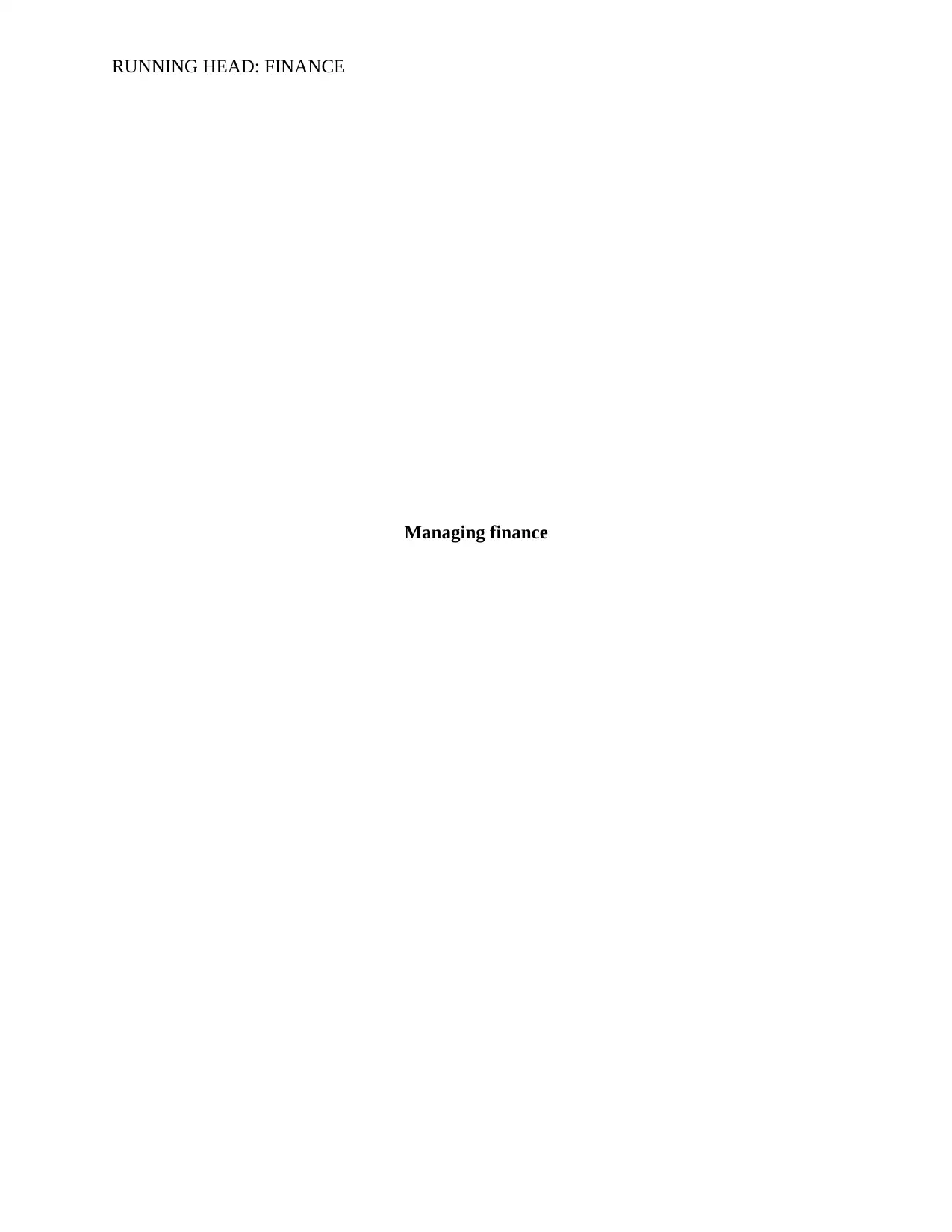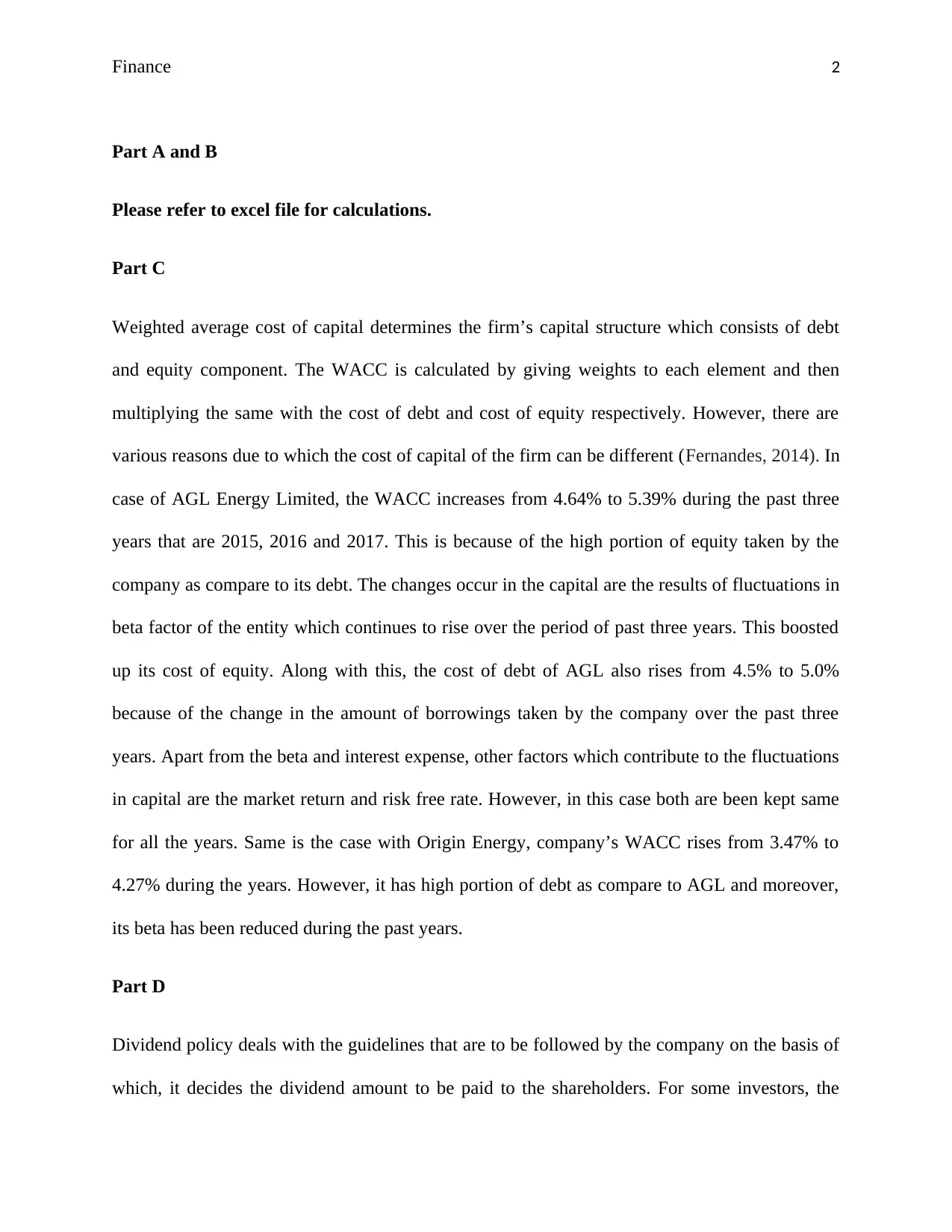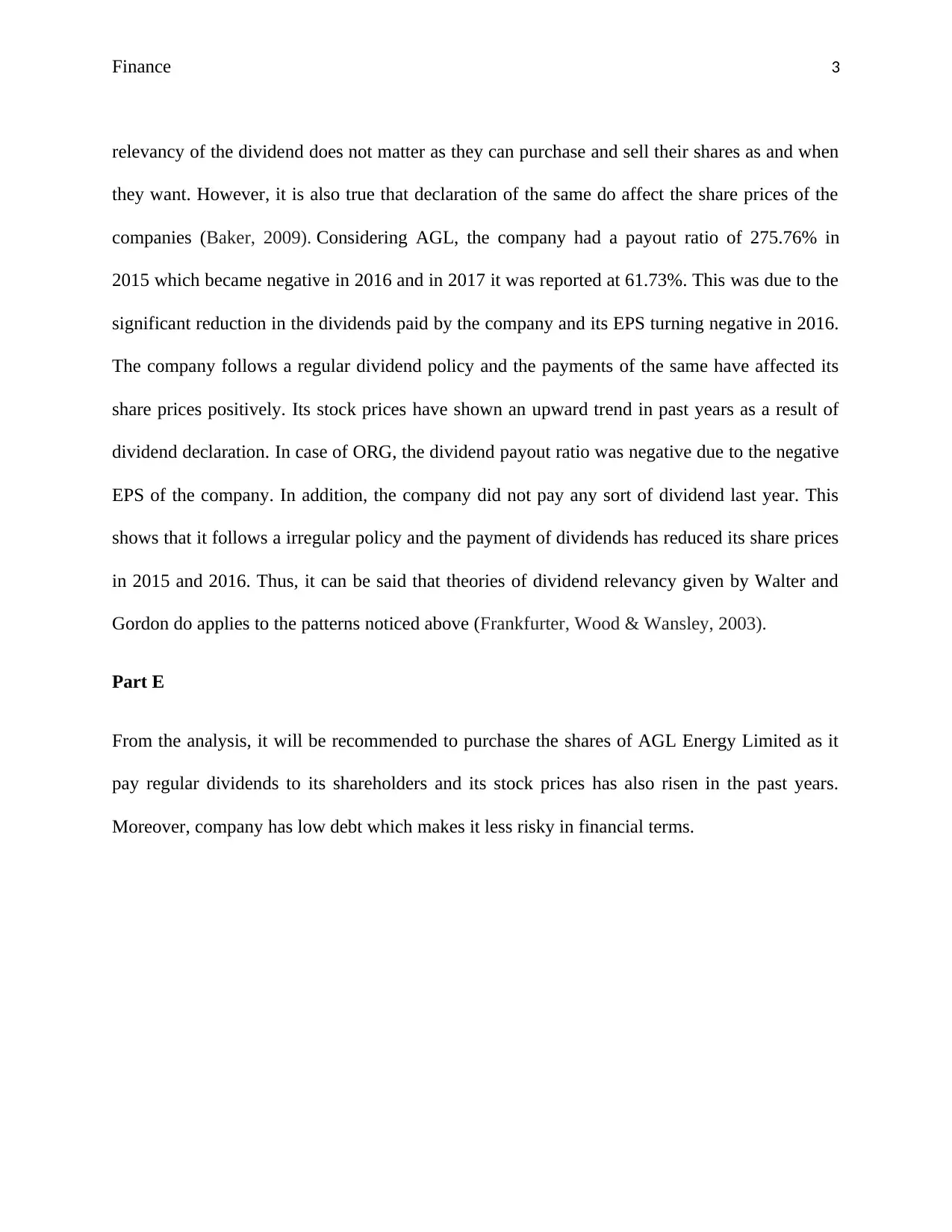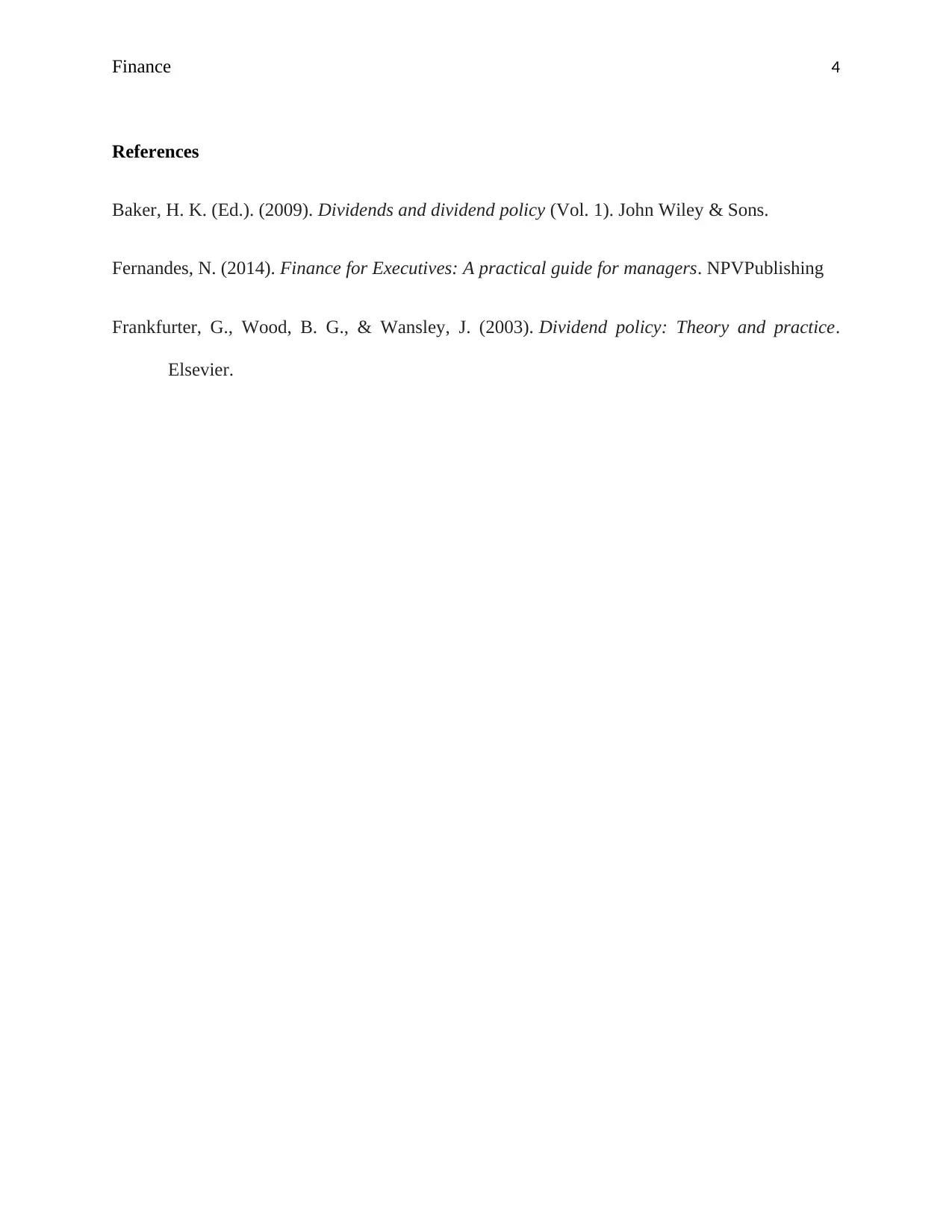Managing Finance Case Analysis Report - FINA6000, University
VerifiedAdded on 2023/06/08
|4
|700
|129
Report
AI Summary
This report provides a financial case analysis of two Australian companies, AGL Energy Limited and Origin Energy, examining their financial performance over a three-year period. The analysis covers key aspects such as Weighted Average Cost of Capital (WACC), exploring how changes in equity, debt, and beta factors influence the cost of capital. The report also delves into the companies' dividend policies, analyzing payout ratios, dividend payments, and their impact on share prices, relating these findings to dividend relevance theories. Furthermore, the report offers investment recommendations based on the findings, highlighting the significance of regular dividends and financial risk assessment. The report utilizes financial data and calculations to support its conclusions, providing insights into the companies' financial health and investment potential.
1 out of 4











![[object Object]](/_next/static/media/star-bottom.7253800d.svg)